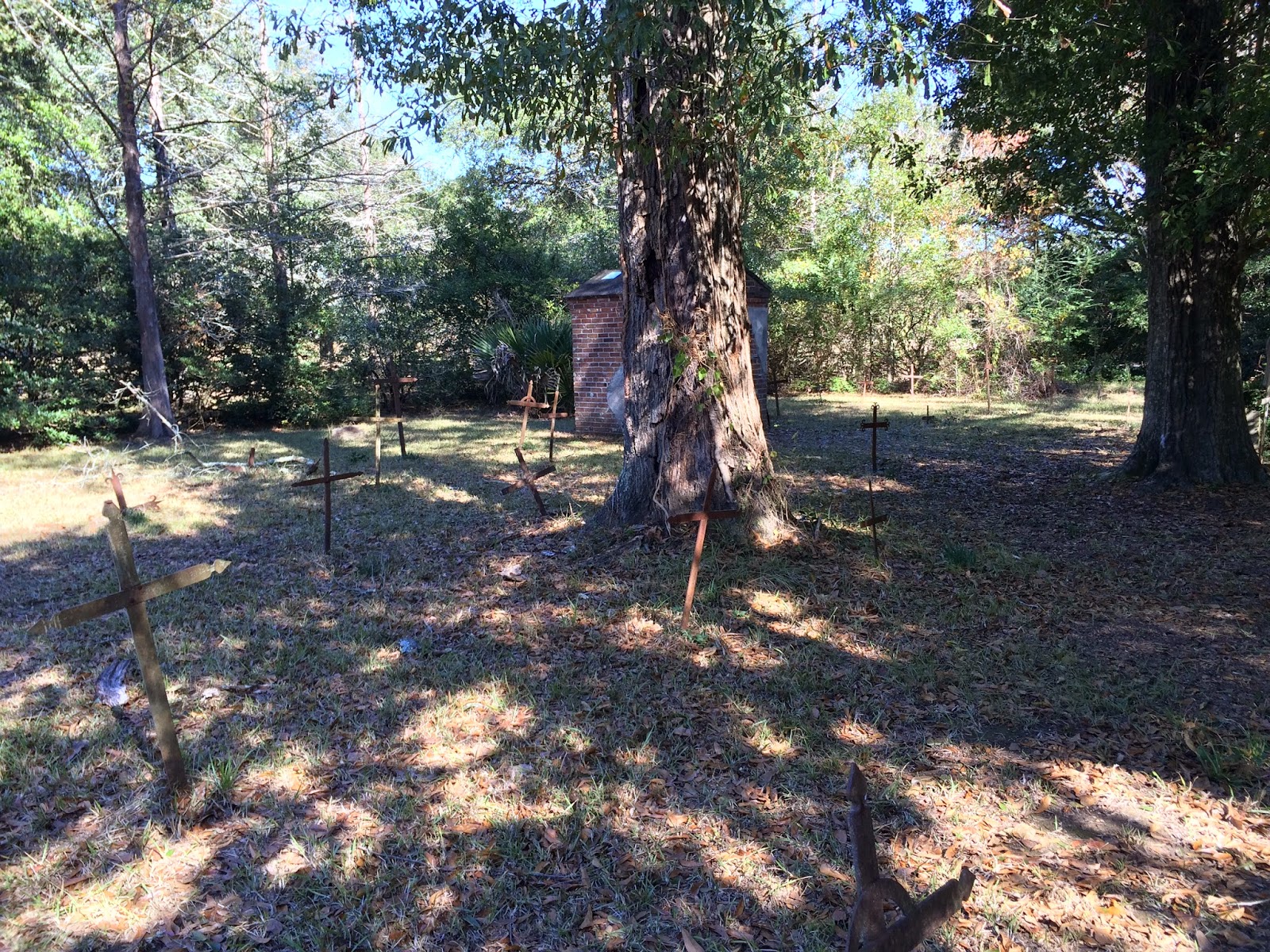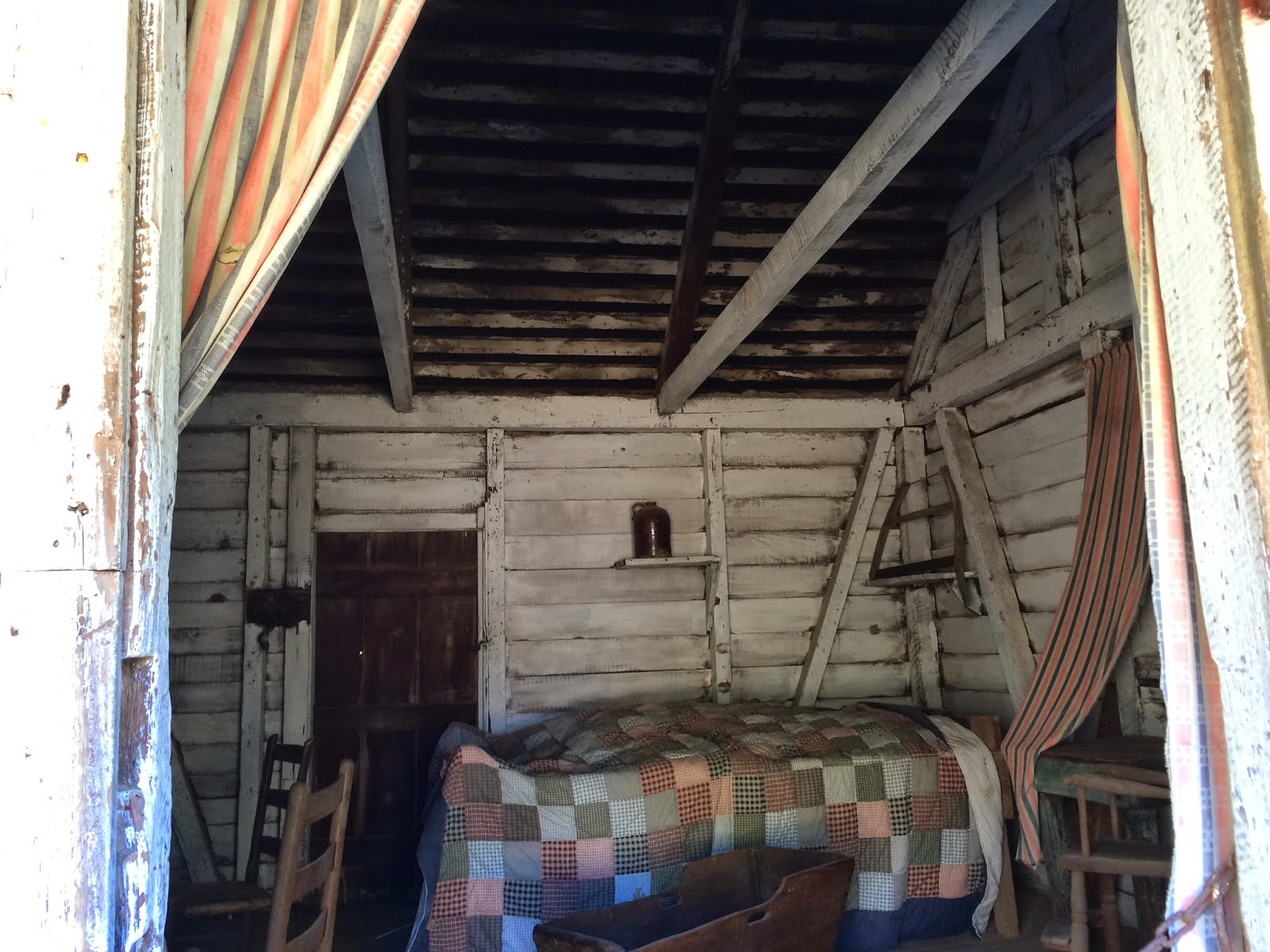Union troops occupied Baton Rouge during most of the war. The Battle of Baton Rouge was a 4-hour bloody attempt by Confederate soldiers to retake the city in April 1862. The city became the state capital in the early 1880s when home rule was restored.
Baton Rouge is the second largest city in Louisiana and one of the largest ports in the nation. It is at the northern end of the "Petrochemical Gold Coast" - the industrial belt that flanks the Mississippi for 100 miles downriver to New Orleans. Across the river from Baton Rouge great sugar plantations form an area known as the "Sugar Bowl of America."
Today we visited the LSU Rural Life Museum, an outdoor folk museum that is a recreation of an 1800s plantation with more than 15 relocated or re-created buildings on 5 acres. The museum is divided into three areas with 36 buildings. The Exhibit Barn area contains rural life artifacts from prehistory to the early 1900s, including tools and vehicles. The authentically furnished Plantation Quarters re-create the plantation's major activities and include a grist mill and blacksmith shop. The Louisiana Folk Architecture area showcases diverse construction techniques to illustrate the various cultures of Louisiana settlers.
These marble columns, in front of the Visitors Center, were once at the entrance to the Hill Memorial Library built on the LSU campus in 1902. A new library was built in 1956 and these pillars ended up at the Museum.
We first spent time in the Exhibit Barn where there were all manner of artifacts and treasures from everyday rural life up to the early 20th century. Actually, it remained me a bit of the second floor of the old garage at home in Indiana and the old farm equipment that was strewn around the shed and barn.
Francisco Vargas, a native of Mexico, moved to New Orleans in the mid-nineteenth century. While a child in Mexico he was taught, by a Catholic priest, to sculpt life-like figures using beeswax. The figures here date to the 1930s and 1940s.
There was a whole room devoted to domestic implements, irons, sewing machines, cooking utensils, etc., and these lovely quilts.
Spanish cattle, first brought to America in 1500, escaped and went wild in the swamps and canebrakes of what would become Louisiana. They evolved into wide-horned, long-lanky, rawboned animals like the two heritage cows. They were fast as deer and ferocious as swamp panthers. Not these two - this one seems to be whispering in the other's ear.
He must not have liked what was said because they then faced off against each other, but only for 2 or 3 seconds.
Dog-Trot house (1863). It is constructed of hewn pine logs and consists of two rooms connected by an open breezeway or "Dog-Trot" under a common roof.
Typically one room would be used as a bedroom,
and the other room used for cooking.
There was a small graveyard with metal crosses.
Intriguing construction of the Pioneer's Cabin.
This bronze sculpture of an elderly black man was created to memorialize the accomplishments and contribution of African-Americans in the 19th century. It was the brainchild of Jackson Bryan who played with African-Americans as a child and worked with them as an adult. Jack Bryan became a successful cotton planter, mill owner and banker. Han Schuler, Sr. sculpted and cast this stature and it was erected in 1927 in Natchitoches, LA, where it became a tourist attraction. But in the 1960s, many African-Americans did not see the statue as a positive memorial. To avoid racial trouble the town decided to remove the statue. It was stored on the family farm of Jo Bryan Ducournau, daughter of Jack Bryan. In 1972, the Chancellor of LSU learned of the sculpture's existence and presented Mrs. Ducournau with a plan to donate it to the LSU Rural Life Museum. Despite eight other requests for the piece including one from the Smithsonian Institution, Mrs. Ducournau selected LSU.
This church's architecture is referred as Country Gothic or poor man's Gothic Revival.
The windows are painted to simulate stained glass.
Note the angel wings on either side at the middle of the picture. One side the wing is red with a pitchfork and on the other side the wing is white with a trumpet.
This house was built in the Acadian style for the French Acadians who were expelled from Nova Scotia.
It has this nice outdoor oven which reminded us of the ones we saw in Newfoundland (see July 29th blog).
Split cypress barn.
The Bergeron House, built in the Acadian style, is believed to be the oldest standing house in Louisiana.
This grist mill is a reproduction of one that existed in Crowley, Louisiana. Mills of this size were usually owned by an individual who would grind his neighbors' corn for a toll, typically a portion of the farmer's corn.
This building is a replica of a small 18th century sugar house employing the open-kettle process developed in the West Indies. This production method utilized a group of iron kettles, usually four to sever arranged in a row from largest to smallest, set into a brick furnace. The heat from the fire, built at the open end, on the right above, passes across the bottoms of the kettles, heating their contents. The least amount of heat was required to heat the raw juice in the largest kettle to the left, while the greatest concentration of heat was needed for the syrup in the smallest. There are various sized kettles scattered all around the grounds of the museum.
Slave cabin with cloth curtains and door covering that would flap in the wind and ward off evil spirits.
The style of this slave building is referred to as a "saddlebag" referring to the two rooms straddling a single central chimney which is shared by back-to-back fireplaces.
The children of some plantation owners were educated at private academies, while others were taught by hired tutors. These tutors were frequently permitted to use their personal time to teach, for a fee, the children of the plantation overseer and of neighboring yeoman farmers.
The overseer's house's front porch with a fan suspended from the ceiling.
A view of the reconstructed plantation's "back" houses.
Back in the Exhibit Barn there was a collection funeral carriages.
Field of sugar cane.
Before today I had not realized that lower Louisiana, on the Gulf, was mostly sugar cane plantations while the upper section of the state grew mostly cotton.





























I love that little church! And great photo of the cows :-)
ReplyDelete